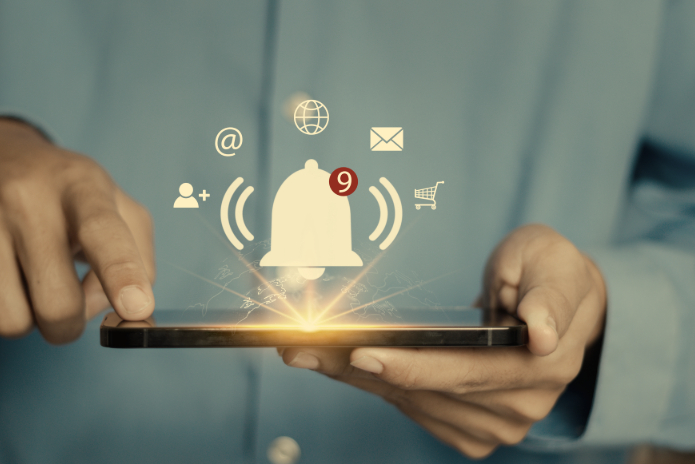The customization and strategic use of push notifications have established themselves as an increasingly powerful solution to boost e-commerce sales.
Push notifications involve reminders for maintaining contact, sales promotions, payment information, and service status updates. All of this creates personalized opportunities for interaction between businesses and customers.
One of the major innovations of the tool for 2025 is its integration with artificial intelligence (AI), which enables the mapping of consumer preferences and habits within the company’s app or website, for example. This ensures that messages arrive at the right time with content tailored to each consumer’s interests. In other words, the brand’s message tends to reach the consumer when they are most likely to open, read, and stay connected to the company’s app or website. This enhances the effectiveness of campaigns, contributing to driving sales.
But this is just one of the innovations related to this technology. In my view, here are the six main trends in push notifications for the coming year:
1 – Use of media (GIFs, images, and videos): push notifications are evolving beyond simple informative texts, now incorporating multimedia content such as GIFs, images, and videos. This provides a more engaging experience for the user, highlighting the product or service being communicated and making the notification more interactive and attractive, increasing the chances of being accessed by up to 45%, thus establishing itself as a powerful engagement channel.
2 – Interactive buttons: with the addition of buttons, push notifications offer direct action options, such as ‘Buy now,’ ‘Learn more,’ ‘Chat on WhatsApp,’ or ‘Add to cart.’ This approach simplifies user interaction with the brand, reducing the number of steps needed to complete an action, such as making a purchase or accessing an offer. These buttons can also be customized with multimedia content, like GIFs and images, generating higher conversion rates.
3 – Artificial intelligence: the integration of AI into push notifications is becoming a dominant trend. AI can identify the best communication channel with the customer, such as WhatsApp, push notifications, email, or SMS, and optimize campaign targeting based on previous interactions. Additionally, AI determines the ideal time to send the notification, increasing the chances of opening, responding, and engaging with the communication.
4 – Group segmentation: advanced tools allow for much more precise segmentation of customer profiles, using behavioral data, demographics, and individual preferences. This enables grouping users into specific segments, such as purchasing habits, interests, interaction history, and even geographic location. With this segmentation, push notifications are sent in the right context and at the most opportune time, significantly improving the user experience.
5 – Encryption: encrypted push notifications preserve privacy and ensure the security of exchanged information, preventing fraud and unauthorized access. This technology protects sensitive information, such as personal data and financial transactions, throughout the communication process. This feature is widely used by banks and financial sector companies, replacing channels like SMS with encrypted push notifications.
6 – Centralization of communication through a ‘customer journey’: the automation, integration, and centralization of a company’s communication channels with its audience are emerging trends. Unifying this entire flow into a single platform allows brands access to privileged information, data cross-referencing, and the adoption of highly customer-centric strategies, resulting in greater adherence to promotional messages via push.
7- Retargeting: same logic as using WhatsApp, but via push, which can be through either an app or a website.
Specifically about the centralization of communication. After a checkout on the website, the customer may receive a message on WhatsApp or email, even an audio from the company’s CEO thanking them. This generates satisfaction. Later, when receiving a promotional push notification, the customer will be more likely to open it. This solution integrates the entire customer journey flow, automated in a single platform.
In conclusion, these innovations demonstrate the growing impact of technology on the global landscape, with companies across various sectors seeking more efficient and personalized solutions for sales in virtual environments. In such a competitive market, assertive and efficient communication stands out as a decisive differentiator, and technological resources for such processes prove indispensable.


